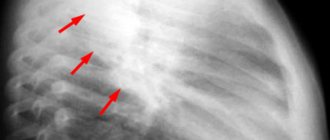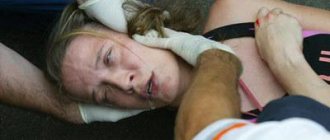This neuroinfection is transmissible. It primarily affects the brain matter. Differs in seasonal character. Outbreaks are recorded from August to the end of September. The onset has no characteristic symptoms and is general infectious. In the acute period, it is accompanied by meningeal syndrome, disorders of consciousness, hyperkinesis, paresis, myoclonus, and bulbar disorders. To make a diagnosis, it is necessary to perform a lumbar puncture and RIF. ELISA. A PCR study is also indicated. For treatment, serum or specific immunoglobulin is used. Corticosteroid, decongestant, vascular, detoxification, and anticonvulsant drugs are prescribed as symptomatic therapy.
Epidemiology[ | ]
Geographical distribution of Japanese encephalitis
Japanese (mosquito) encephalitis is caused by a virus transmitted by mosquitoes (Culex pipiens, Culex trithaeniorhynchus, Aedes togoi, Aedes japonicus). People most often get sick, but monkeys, white mice and livestock can also become infected. Human infection occurs as a result of mosquito saliva entering the wound caused by a bite. Japanese encephalitis is characterized by seasonality associated with the timing of mosquito breeding. The disease mainly affects young people who work in wetlands.[9]
Prevention
Protective measures include:
- Protective clothing.
- Mosquito net.
- Treatment with repellents.
Vaccination is indicated as a specific prevention. It is carried out for residents of endemic zones and people planning to visit them. Children are vaccinated from the age of one year. Adult residents usually no longer need vaccination.
The standard scheme consists of three stages. The vaccine is administered at intervals of 7 and 21 days. With an accelerated schedule, the 3rd administration is carried out a week after the second. The first 2 doses provide sufficient protection in 80% of cases. The last vaccination should occur no later than 10 days before traveling to an endemic area. This is necessary for the formation of immunity. Revaccination is indicated at intervals of 2-3 years.
Etiopathogenesis[ | ]
Japanese encephalitis virus belongs to the genus Flavivirus
family
Flaviviridae
, part of the ecological group of arboviruses. The virus contains RNA, its size does not exceed 15-22 nm. When boiled, it lasts for two hours. Alcohol, ether and acetone have an inhibitory effect on the activity of the pathogen only after 3 days. It is stored for a long time in a lyophilized state. At low temperatures it can last for more than a year. The entry gate is the skin. The spread of the virus can occur through both hematogenous and perineural routes. The virus then penetrates the brain parenchyma, where it multiplies. In severe forms, generalization of the infection and reproduction of the pathogen are observed both in the nervous system and beyond. After accumulation in neurons, the virus again enters the blood, which corresponds to the onset of clinical manifestations.
Therapy
Treatment takes a comprehensive approach. Observation by an infectious disease specialist, neurologist, and resuscitator is necessary. In the first week after the onset of the disease, it is necessary to administer specific immunoglobulin three times a day. Instead, you can use serum taken from convalescents. In parallel, symptomatic and pathogenetic therapy is carried out. It includes measures aimed at:
- Prevention of cerebral edema.
- Detoxification.
- Maintaining the activity of systems and organs.
- Preventing complications.
If necessary, resuscitation measures are carried out. Connect the patient to a ventilator. The use of diuretics, glucocorticosteroids, vascular medications, and anticonvulsants has proven itself well.
Pathomorphology[ | ]
In the deceased, the membranes and substance of the brain are swollen and congested; the substance of the brain contains hemorrhages and areas of softening. Histological examination reveals perivascular infiltrates, hemorrhages, neuronophagia and degeneration of nerve cells. In the internal organs - plethora, hemorrhage in the serous and mucous membranes, dystrophic changes, especially in the heart muscle, liver and kidneys. The immediate cause of death is damage to the brain stem, edema and swelling of the brain, ITS.
What it is?
Mosquito encephalitis is a viral infectious disease caused by the introduction of a particularly dangerous filtering virus. It should be noted that the virus is transported through the bloodstream into vital environments and human systems. The blood and lymph flow spreads along with the virus.
Most often, mosquito encephalitis affects the central nervous system. Including damaging factors associated with the brain. As a result, persistent clinical signs are revealed.
The patient has a whole range of symptoms reminiscent of meningitis and encephalitis. This viral disease can infect animals. That is, humans are not always the only source of spread of the virus.
Therefore, when animals are infected, the virus can be transmitted to humans. Mosquito encephalitis differs in its symptomatic complexes from tick-borne encephalitis. However, there are similar types of lesions.
go to top
Clinical picture[ | ]
The incubation period of the disease is from 5 to 15 days. The disease begins suddenly with rapidly increasing general infectious symptoms. Prodromal phenomena may be observed in the form of rapid fatigue, general weakness, drowsiness, and decreased performance. Sometimes diplopia, decreased visual acuity, speech disorders, and dysuric disorders occur. On the first day of illness, febrile fever occurs; from the second day, the illness is accompanied by a feeling of heat or tremendous chills, severe headache, vomiting, severe malaise, weakness, staggering, myalgia, facial hyperemia and conjunctivitis, bradycardia alternating with tachycardia, tachypnea. A coma and petechial exanthema often develop, which is accompanied by changes in consciousness. Frequent signs of the acute period are myoclonic fibrillary and fascicular twitching in various muscle groups, especially on the face and limbs, rough irregular tremor of the hands, which intensifies with movements. In the clinical picture of the disease, several syndromes are distinguished, which can be combined with each other.
Infectious-toxic syndrome
characterized by a predominance of symptoms of general intoxication with a minimum of neurological disorders. The picture of peripheral blood reveals an increase in ESR to 20-25 mm/h, an increase in the amount of hemoglobin and red blood cells, neutrophilic leukocytosis with a sharp shift in the leukocyte formula to the left, up to juvenile forms.
Meningeal syndrome
proceeds as serous meningitis. There are also convulsive, bulbar, comatose (90% mortality), lethargic, amentive-hyperkinetic and hemiparetic syndromes. The severity of the disease and the polymorphism of its manifestations are determined by the characteristics of brain damage. Symptoms of the disease reach their greatest intensity on the 3-5th day from the onset of the disease. Mortality is 40-70%, mostly in the first week of illness. Survivors recover very slowly, with prolonged asthenic complaints.[9]
Medical reference books
Mosquito encephalitis
ICD-10: A83
Mosquito encephalitis
(synonyms for the disease: Japanese encephalitis, summer-autumn encephalitis, encephalitis B) is an acute viral natural focal infectious disease characterized by fever and severe damage to the central nervous system - meningeal syndrome, hyperkinesis and muscle hypertension, sometimes spastic paresis and paralysis, mental disorders.
Historical data
Since the end of the 19th century. In Japan, summer-autumn outbreaks of severe disease affecting the nervous system were recorded. Significant epidemics were described in 1871-1873. in Kyoto and Osaka, as well as in 1916-1924. The disease was mistakenly considered a particularly severe form of cerebrospinal meningitis. The 1924 epidemics (6125 cases, 70% mortality) were assessed as an outbreak of Economo's encephalitis lethargica. Mosquito encephalitis was identified as a separate nosological form in 1924 by Futaki, Kaneko, Inada. In 1933, M. Hayashi isolated the virus by infecting monkeys with an emulsion of the brains of people who had died from encephalitis.
Etiology
The causative agent of mosquito encephalitis belongs to the genus Flavivirus, family Togaviridae. Virions contain single-stranded RNA. The virus is pathogenic for most laboratory animals, monkeys. Reproduces in chicken embryos, continuous and primary cultures of animal and human cells, capable of GPD, hemagglutination of erythrocytes. Low resistance to environmental factors, sensitive to heat (at a temperature of 56 ° C it dies after 30 minutes), disinfectants, ether, and is well preserved at low temperatures.
Epidemiology
During the inter-epidemic period, the main reservoir of infection in nature is bats, which secrete the virus year-round. A long residence time of the virus in poikilothermic animals (snakes) has been established. Wild birds are also reservoirs of infection. During the epidemic period, the source of infection can be poultry and animals, more often horses, less often cattle, pigs, sometimes dogs, rodents. A sick person, if there are carriers, can also be a source of infection. The infection is transmitted by mosquitoes of the genera Culex and Anopheles, in whose bodies the virus multiplies at an ambient temperature of at least 22 °C. Infected mosquitoes transmit the virus to humans or animals through their saliva when they bite.
Mosquito encephalitis is characterized by summer-autumn seasonality and endemicity. There are stable natural foci of infection, where the main source is wild animals, and synanthropic (urban and rural), in which domestic animals and sick people play the role of source of infection. Susceptibility to the disease is general. Immunity after an illness is stable and long-lasting. The disease is recorded in Japan and almost throughout the eastern part of Asia.
Pathogenesis and pathomorphology
It is believed that after entering the blood during a mosquito bite, the virus primarily multiplies in the cells of the nervous system, where it is introduced hematogenously. Repeated viremia determines the end of the incubation period and the onset of acute pathology. The nervous system is more affected, the peculiarity of which is the predominance of the autoimmune-allergic component. Edema of the brain and its membranes, venous congestion, and multiple pinpoint hemorrhages are observed. Destruction and small areas of necrosis are found in almost all parts of the central nervous system without any preferential localization. In the internal organs, infiltrative-degenerative changes in capillaries with secondary minor perivascular infiltrates, parenchymal degeneration of the myocardium, liver, kidneys, and pneumonic foci in the lungs predominate.
Clinical picture
The incubation period lasts 4-24, more often 10-12 days. The disease begins acutely with chills and an increase in body temperature to 39-40 ° C. The skin of the face, neck, and upper chest is hyperemic, the sclera is injected. There is increased sweating and sometimes drooling. Against the background of hyperthermia, signs of meningoencephalitis progressively increase over 4-8 days - severe headache, general hyperesthesia, vomiting. They exhibit rigidity of the neck muscles, Kernig's and Brudzinski's symptoms. Already on the 2-3rd day of illness, hallucinations, fog or loss of consciousness are possible. A general increase in muscle tone causes a forced posture, characteristic of patients with severe cerebral hypertension - with the head thrown back, arms bent and legs brought to the stomach. Hyperkinesis of the muscles of the face and limbs can turn into tonic convulsions. Stereotypes arise - repeated repetition of the same movements. In some patients in the acute period, unstable paresis of various localizations are observed, pathological reflexes of Babinsky, Oppenheim, etc. appear. The cerebrospinal fluid is transparent, colorless, flows out under increased pressure, with a slightly increased amount of protein, moderate lymphocytic pleocytosis is observed (20-80 cells in 1 μl ). Impaired function of the circulatory system is caused by pathology of the hypothalamic region. Tachycardia up to 120-140 beats per minute and increased blood pressure are detected. In the lungs, by the end of the first week of illness, focal pneumonia is possible. On the blood side, unlike many viral infections, significant leukocytosis (15-20-109 in 1 l), neutrophilia (75-85%), increased ESR (20-30 mm/h) is observed. If the patient does not die during the first 10 days of illness, the symptoms of organic brain damage (paresis, impaired coordination, hyperkinesis) disappear quite quickly, leaving no profound changes, although significant asthenia and mental disorders appear for a long time. Persistent decline in intelligence and psychosis as residual manifestations lead to disability. In addition to the named clinic, the disease can occur without encephalitic manifestations and even in a subclinical form. One of the most unfavorable premorbid factors influencing the course of mosquito encephalitis is considered to be general overheating of the body, especially during significant physical exertion.
Complications
In the acute period, the development of secondary bacterial pneumonia, sepsis, and nephropathy is possible. The degree and severity of disability are determined by the layers of various secondary pathologies.
Forecast
Mortality from mosquito encephalitis sometimes reaches 30-80%. Disability after an illness is often caused by a sharp degree of dementia, persistent paralysis and hyperkinesis, speech and hearing disorders.
Diagnosis
The main symptoms of the clinical diagnosis of mosquito encephalitis are the acute onset of the disease, hyperthermia, a combination of meningeal syndrome with such manifestations of encephalitis as muscle hypertonicity and hyperkinesis, tonic convulsions, stereotypies, hyperhidrosis, drooling, and mental disorders. Epidemiological history data (stay in an endemic area, mosquito bites) are important.
Specific diagnostics
In order to isolate the virus from the blood and cerebrospinal fluid, and from the dead - from the brain, the material is injected intracerebrally or intraperitoneally into white mice. Next, the virus is identified in RN, RTGA and RSK. Among the serological methods, RTGA and RSK are used; studies are carried out in paired blood sera taken from patients at the onset of the disease and after 4 weeks.
Differential diagnosis
Differential diagnosis should be made with primary and secondary encephalitis, in the initial period - with influenza, in which pain in the area of the superciliary arches, eyeballs, catarrhal symptoms, tracheobronchitis, and leukopenia are observed. Tick-borne encephalitis is characterized by flaccid paralysis of the muscles of the shoulder girdle; muscle hypertension and spastic paralysis are rarely detected. When differentiating from other arboviral encephalitis, epidemiological history data (different areas of distribution), results of virological and serological studies are taken into account. Economo's epidemic lethargic encephalitis differs from mosquito encephalitis in general stiffness, drowsiness, and the presence of oculoletargic and vestibular syndromes; it is not characterized by meningeal syndrome. A residual manifestation of encephalitis lethargica is parkinsonism (shaking paralysis). Secondary encephalitis caused by enteroviruses, influenza viruses, mumps, chickenpox, measles, and rubella are characterized by a predominance of cerebral manifestations; focal lesions are usually minor and are not accompanied by persistent widespread paresis. In addition, a medical history or an objective examination reveals symptoms inherent in the disease, and a blood test reveals leukopenia with relative lymphocytosis. Poliomyelitis is characterized by two-wave fever, catarrhal manifestations and often minor diarrhea at the onset of the disease with the development of persistent flaccid proximal paralysis, most often of the lower extremities.
Treatment
As a specific agent, use hyperimmune equine immunoglobulin 5-10 ml or serum 15-20 ml intramuscularly according to Bezredka for 3-4 days, especially in the first 5-7 days of illness, as well as convalescent blood serum 20-30 ml intramuscularly or intravenously. In case of severe disease, serotherapy is continued for up to 10-15 days. Ribonuclease, interferon (reaferon), acyclovir are prescribed. For the purpose of pathogenetic treatment of patients with meningoencephalitis syndrome, glucocorticosteroids, dehydrating and sedatives are used, and antibiotics are used to combat secondary infections. If there is a threat of bulbar disorders, resuscitation measures are necessary. For 4-6 weeks - strict bed rest. Further treatment is aimed at restoring impaired functions, which requires, in particular, the use of psychotropic drugs.
Prevention
Mosquito control measures are being taken - chemical treatment of reservoirs with mosquito larvae and pupae, premises with insecticides, and the use of personal protective equipment. For active immunization of people and animals in endemic areas, inactivated formol vaccine is used. As a means of emergency prevention, a single intramuscular injection of 3-6 ml of hyperimmune gamma globulin or 10 ml of hyperimmune serum is recommended according to Bezredka.
Forecast[ | ]
Japanese encephalitis is characterized by a severe course. Symptoms increase over 3-5 days. The temperature lasts from 3 to 14 days and drops lytically. Death occurs in 40-70% of cases, usually in the 1st week of illness. However, death can occur at a later date as a result of additional complications, often resulting from antibody-dependent enhancement of infection (ADE)[11]. In favorable cases, complete recovery with a long period of asthenia is possible.[12]
Medical prognosis
The fatality rate from this disease is high. According to statistics, from 30 to 70% of all cases are fatal. Occasionally, Japanese encephalitis occurs in a mild form and is characterized by an abortive course. Convalescents develop persistent neurological disorders. They include paresis, hearing loss, hyperkinesis, speech disorders, deterioration of visual acuity, and ataxia. Pathologies may be accompanied by mental disorders - dementia, hebephrenia, manic-depressive states. In the future, they require constant monitoring by a psychiatrist and neurologist.
Notes[ | ]
- Disease Ontology release 2019-05-13 — 2019-05-13 — 2020.
- Monarch Disease Ontology release 2018-06-29sonu - 2018-06-29 - 2018.
- Uchaikin V.F., Shamsheva O.V.
Guide to clinical vaccinology // M. GEOTAR-Media. - 2006. - 592 p., ill. ISBN 5-9704-0189-7. (pp. 313-314). - Lobzin Yu. V., Belozerov E. S., Belyaeva T. V., Volzhanin V. M.
Human viral diseases // St. Petersburg: SpetsLit. — 2020. — 400 pp., ill. ISBN 978-5-299-00641-4. - Meningitis and Encephalitis Fact Sheet | National Institute of Neurological Disorders and Stroke (unspecified)
. www.ninds.nih.gov. Retrieved October 22, 2020. - ↑ 1 2 V. N. Timchenko, L. V. Bystryakova.
Infectious diseases in children. - St. Petersburg: SpetsLit, 2001. - 4,000 copies. — ISBN 5-299-00096-0. - Japanese encephalitis at www.adventus.info (unspecified)
(inaccessible link). Retrieved November 9, 2009. Archived November 28, 2009. - WHO - Japanese encephalitis (JE) in India (unspecified)
(unavailable link). Retrieved November 9, 2009. Archived July 24, 2009. - ↑ 12
Japanese encephalitis at health.centrmia.gov.ua (Russian) (inaccessible link). Retrieved August 14, 2009. Archived January 24, 2010. - E.P.
Shuvalova. Infectious diseases. — 5th edition. - Yaroslavl: Medicine, 2001. - P. 439-451. — 624 p. — 5000 copies. — ISBN 5-225-04578-2. - Patterns of persistence of the Japanese encephalitis flavivirus and experimental development of diagnostic and prophylactic drugs
- Japanese encephalitis on www.eurolab.ua (Russian) (inaccessible link). Retrieved August 14, 2009. Archived June 5, 2009.
Treatment and prognosis of Japanese encephalitis
Treatment of Japanese encephalitis is carried out jointly by neurologists, infectious disease specialists and resuscitators. In the first week of encephalitis, specific immunoglobulin or serum taken from convalescents is administered three times a day. In parallel, pathogenetic and symptomatic treatment is carried out, aimed at detoxification, prevention of cerebral edema, maintaining the activity of major organs and systems, and combating complications. If necessary, perform mechanical ventilation and resuscitation measures. Glucocorticosteroids, diuretic pharmaceuticals, vascular agents, and anticonvulsants are prescribed.
According to various sources, in 30-70% of cases, Japanese encephalitis is fatal. In some cases, mild and abortive cases have been reported. Convalescents may experience persistent neurological disorders (paresis, hyperkinesis, hearing loss, decreased vision, speech disorders, ataxia) and mental disorders (hebephrenia, dementia, manic-depressive state), which subsequently require constant monitoring by a neurologist or psychiatrist.
Prevention of Japanese encephalitis
Measures to reduce the incidence of Japanese encephalitis in endemic areas include the use of mosquito nets and protective clothing, and the treatment of exposed skin with repellents. Specific prevention is carried out by vaccination. It is carried out in endemic foci and for persons traveling there. Children can be vaccinated starting from 1 year of age. Adult urban populations in endemic regions generally do not require vaccination.
The standard vaccination regimen consists of three doses of the vaccine with an interval of 7 and then 21 days. There is also an accelerated schedule in which the third dose of the vaccine is given 7 days after the second. It is believed that the first 2 doses of the vaccine provide sufficient protection in 80% of cases. The last dose of the vaccine should be administered 10 days before moving to an endemic area. Revaccination is carried out at intervals of 2-3 years.
Diagnostics
Diagnostic detection of mosquito-borne encephalitis requires certain information about the disease. This information relates to the pathological picture of the disease. It is often necessary to use the following diagnostic methods:
- anamnesis;
- epidemiological data;
- clinic.
Diagnosis includes examination of the patient's general condition. In this case, when measuring pulse and pressure, the following data is detected:
- increased heart rate;
- increased blood pressure.
This includes laboratory data on the blood picture. After all, the virus develops and spreads hematogenously. Therefore, the blood picture for mosquito encephalitis is as follows:
- increase in the number of leukocytes;
- increased number of neutrophils;
- increased erythrocyte sedimentation rate.
A puncture of the cerebrospinal fluid reveals its pathological nature. The picture resembles tick-borne encephalitis. The cerebrospinal fluid environment is characterized by the presence of changes associated with the predominance of formed elements.
Diagnosis of mosquito encephalitis includes epidemiological data. That is, the presence of an epidemic in a certain territory. This epidemic is an important factor for diagnosis.
Diagnosis of the disease includes consultation with a specialist. Consultation is carried out with the help of the following specialists:
- neurologist;
- therapist;
- infectious disease specialist;
- cardiologist.
Diagnosis of mosquito encephalitis is aimed not only at establishing a diagnosis, but also at preventing complications. After all, a timely diagnosis guarantees a quick start to the treatment process. This significantly improves the patient's condition.
go to top
In adults
Mosquito encephalitis in adults is a common pathological process. The causes of mosquito encephalitis in epidemiological areas are vector-borne transmission of the virus by mosquitoes. And the involvement of the virus in the blood of the affected person.
The infected blood of an adult begins to spread through the lymph flow. Brain damage is especially dangerous. As well as damage to the central nervous system. The disease occurs in adults at any age.
Moreover, age is not limited. The young working population suffers most from the disease. They tend to lose their ability to work. Including adults, the following symptoms are noted:
- headache;
- loss of orientation (motor function);
- severe nervous system disorder;
- paralysis;
- rave;
- hallucinations.
All these symptoms, one way or another, reflect the pathological picture of the disease. If this disease is not treated in a timely manner, the disease enters the secondary stage of its development. It is accompanied by pneumonia.
Adults often develop disability as a consequence of the disease. This is especially true for people with reduced body reactivity. Therefore, sick people are often prescribed vitamin complexes.
The treatment process for the disease in adults includes the use of serums, as well as the use of drugs that improve the patient’s condition. Antiviral agents are also indicated.
go to top
Symptoms
The infection period is designed for a certain period. The period of infection ranges from eleven to fourteen days. Mosquito encephalitis usually develops acutely. That is, the body’s acute reactions to the introduction of the virus are expressed.
In a sick person, symptoms are associated with a febrile period. The period of increased body temperature is persistent, and meningitis may occur. Meningitis is the main symptom of the disease. Meningitis mainly affects the human brain.
As a result of the meningeal symptomatic complex, the patient feels tired and weak. The most significant symptoms are:
- intense headache;
- disturbance of consciousness.
The most severe course of meningitis is accompanied by more pronounced symptoms. A patient in serious condition is characterized by the following symptoms:
- coma;
- motor dysfunction;
- general anxiety.
It should be noted that the course of the disease in most cases is acute. In other cases, the course of the disease may be hidden. The latent course of the disease is also characterized by certain symptoms. Sometimes the disease is recognized late, which leads to a chronic course.
The chronic course of the disease leads to a neurotic state of the patient. Various disorders in the central nervous system are possible. Ultimately, the disease ends in a comatose state. It is not always possible to bring a patient out of a chronic coma.
Patients with mosquito encephalitis are characterized by external signs. Most often, external signs concern redness of the face and some skin of the body. Increased secretion of sweat glands may occur.
Pathological changes in the respiratory organs are also observed. Moreover, these pathological changes concern the bacterial flora of the respiratory organs. The secondary process ends with the introduction of pneumococci. Pneumococci are known to cause pneumonia.
For more information, visit the website: bolit.info
Don't forget to consult your doctor!
go to top











